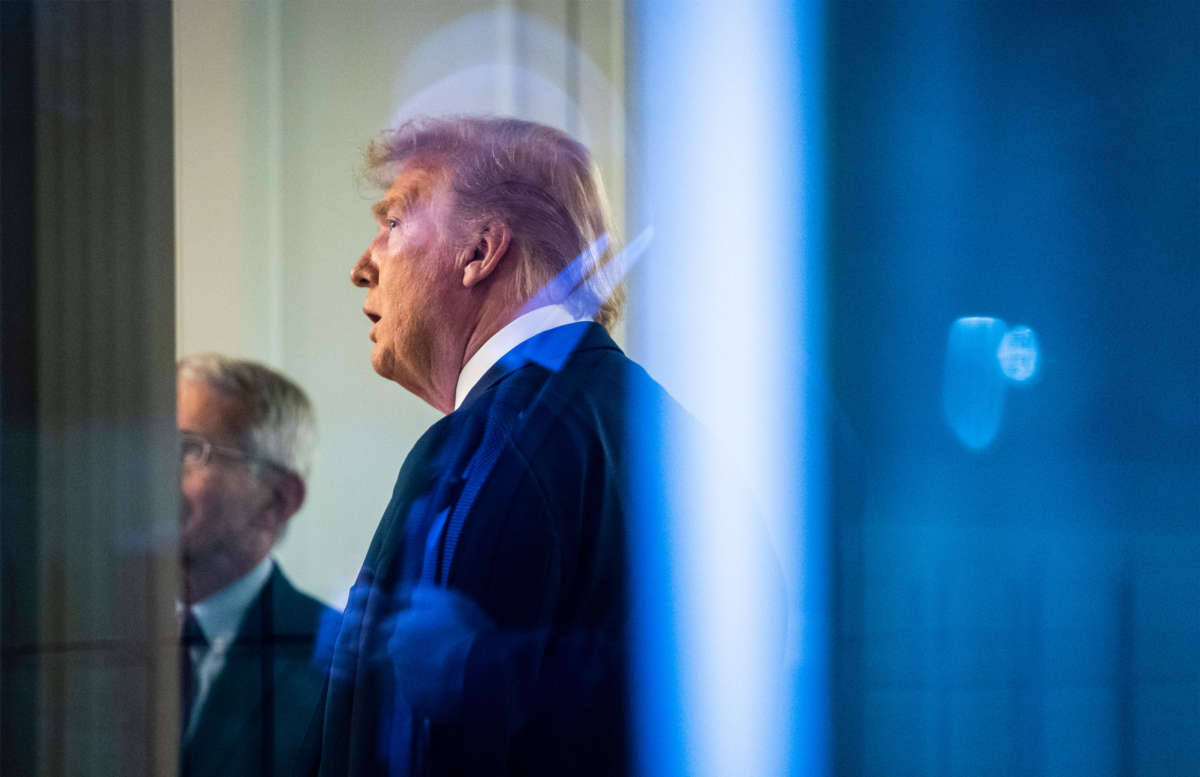President Donald Trump continues to place much of the blame for the presence of coronavirus in the United States on China, suggesting in comments on Monday that his administration was looking into Beijing’s actions to demonstrate that they are at fault for the pandemic’s spread.
“We’re doing very serious investigations…. We are not happy with China,” Trump said to reporters. “There are a lot of ways you can hold them accountable.”
The new strategy seems to be one that Republicans, in general, are signing onto, as a newly disclosed memo detailed how Senate Republicans are aiming to put most of the blame for the disease on China within their campaign strategy.
“Coronavirus was a Chinese hit-and-run followed by a cover-up that cost thousands of lives,” that memo said.
But the way Trump acted early on during the crisis puts contentions like these into doubt, as it was evident in public statements that the president was all-too-happy to accept China’s narrative on the disease while ignoring the warnings in the President’s Daily Brief (PDB) from intelligence officials not to do so.
On January 31, Trump ordered most travel from China to be suspended to stop the spread of COVID-19, though some exceptions were allowed. He has since claimed that the decision has “saved a lot of lives,” but experts say there’s no real way to tell if that’s true or not.
In the immediate weeks following that date, however, the president took a more congenial tone with China. On February 10, he said that the nation’s leaders were running things “professionally” and that they had the virus “under control.”
“I really believe they are going to have it under control fairly soon,” Trump added.
On February 13, after being questioned about it, Trump seemed to acknowledge that China’s messaging on coronavirus could probably not be trusted, but he also appeared to justify President Xi Jinping’s decision to be less forthcoming on what was happening on the ground.
“Well, you never know. I think they want to put the best face on it. So you know, I mean, if somebody — if you were running it, you’d probably — you wouldn’t want to run out to the world and go crazy and start saying whatever it is because you don’t want to create a panic,” Trump explained.
He elaborated that he continued to think “President Xi is extremely capable” in handling the matter.
Those words from Trump contradict what his intelligence team was trying to tell him at the time.
According to The Washington Post, Trump received more than a dozen PDB reports from officials in January and February demonstrating the seriousness of the pandemic in China, including its spread to other parts of the world. Since Trump reportedly doesn’t read the briefings himself (preferring to hear them orally from aides, if at all), the coronavirus issue was discussed out loud for his benefit in oral versions of the PDBs in mid- to late-January, according to at least one official.
Included in the PDBs was the fact that China couldn’t be trusted when it came to information the country’s leaders were trying to disseminate. Still, as noted above, Trump appeared willing to accept Beijing’s statements on occasion, or if he didn’t trust them, he didn’t seem to think that their misinformation about the spread of COVID-19 was anything to worry over.
Indeed, Trump spent most of February downplaying the seriousness of coronavirus, including on February 26 when he implied that the number of cases then seen in the U.S. would be “close to zero” within a matter of days.
When critics noted that his words contradicted what health experts were saying about the disease, the president scoffed at them, stating that those critics were engaged in a “new hoax” against him to make him look bad politically.
Trump claimed at that time that Democrats and the media were in “hysteria mode” about the possibility of the virus spreading more. Almost two months to the day since those comments, however, it seems those worries might have been justified, now that nearly 60,000 Americans have died from COVID-19 and over a million cases have been reported in the U.S. as of Tuesday morning.
